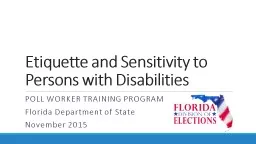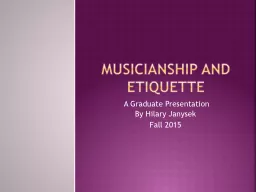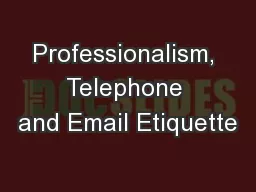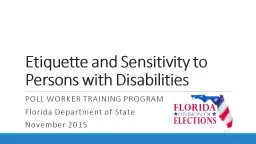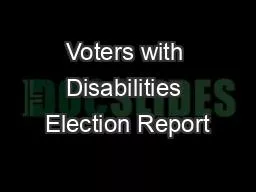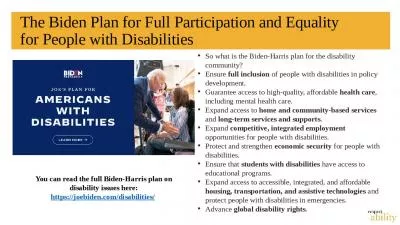PPT-Etiquette and Sensitivity to Voters with Disabilities
Author : pasty-toler | Published Date : 2018-12-15
P oll Worker Training Program Florida Department of State 20152016 Aristotle If liberty and equality as is thought by some are chiefly to be found in democracy
Presentation Embed Code
Download Presentation
Download Presentation The PPT/PDF document "Etiquette and Sensitivity to Voters with..." is the property of its rightful owner. Permission is granted to download and print the materials on this website for personal, non-commercial use only, and to display it on your personal computer provided you do not modify the materials and that you retain all copyright notices contained in the materials. By downloading content from our website, you accept the terms of this agreement.
Etiquette and Sensitivity to Voters with Disabilities: Transcript
Download Rules Of Document
"Etiquette and Sensitivity to Voters with Disabilities"The content belongs to its owner. You may download and print it for personal use, without modification, and keep all copyright notices. By downloading, you agree to these terms.
Related Documents

